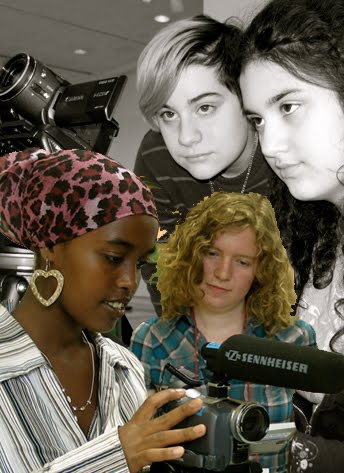
Filmmaker Unearthed:
A Style Of Her Own
Since we started off with a filmmaker you’ve probably never heard of, I figured we would continue this week with one you may know. Sound good? Excellent. We begin.
Hint: This filmmaker is an excellent role model if you are a dabbler in many things. She once went to her father to ask if she should focus on one area and he advised her to keep doing all the things she was interested in and that one day they would come together on their own.

Did you guess right? It’s…
Sofia Coppola
(1971- )
Sofia Coppola is a director, screenwriter, designer, photographer and has acted, modeled, and studied painting. (I wasn’t kidding about the dabbling.) Her first appearance in a film was as an infant in her father’s film The Godfather. From there she did a few small acting parts, but wasn’t fond of being in front of the camera. Critics bashed her performance in The Godfather III and she shied away from acting even more. She explored other venues like painting, modeling, photography and designing. Sophia created her own clothing line called Milkfed which is sold in
Coppola soon tried her hand at filmmaking and found a niche for herself.
Ms. Coppola is descended from a line of filmmakers. Her father is Francis Ford Coppola who is the director of films like The Godfather, and her grandfather was a composer who wrote music for films, while a couple of cousins and aunt are well-known actors. Some criticism of her work is aimed at her family connections. They claim her work is only made possible because of her family and not because of her talent. (That’s heated, isn’t it?)
She has won a few awards for her films which include being the first American woman to be nominated for an Academy Award (and the third woman overall) for Best Director for her film Lost in Translation. She won an Oscar for her original screenplay for Lost in Translation. Somewhere won the Golden Lion award at the Venice Film Festival making her the first American woman to receive the award.
There you have it. Meet Sofia Coppola.
Questions: I’m a wee bit shocked that it’s just recently that women are winning some filmmaking awards. What reasons can you think of for women to be winning awards now? (Maybe there aren’t many women in film…?)
What inspires or makes you cringe when watching Coppola’s films?
References
Photo of Bamboo and handmade paper lamp by Boby Dimitrov
Photo of Sofia Coppola by Valerie Enriquez
Article references to follow due to technical difficulties







